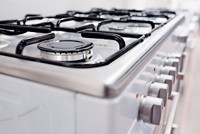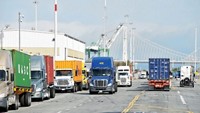Advertisement
Grab your lab coat. Let's get started
Welcome!
Welcome!
Create an account below to get 6 C&EN articles per month, receive newsletters and more - all free.
It seems this is your first time logging in online. Please enter the following information to continue.
As an ACS member you automatically get access to this site. All we need is few more details to create your reading experience.
Not you? Sign in with a different account.
Not you? Sign in with a different account.
ERROR 1
ERROR 1
ERROR 2
ERROR 2
ERROR 2
ERROR 2
ERROR 2
Password and Confirm password must match.
If you have an ACS member number, please enter it here so we can link this account to your membership. (optional)
ERROR 2
ACS values your privacy. By submitting your information, you are gaining access to C&EN and subscribing to our weekly newsletter. We use the information you provide to make your reading experience better, and we will never sell your data to third party members.
Environment
How Dirty Is The Yellow School Bus?
Air Pollution: Tailpipe controls on buses don’t clear the air inside bus cabins
by Janet Pelley
August 11, 2011

As iconic yellow buses transport children to and from school, their diesel engines deliver big doses of air pollutants. In response, school districts have started retrofitting their buses to cut tailpipe emissions. But a new study shows that while these measures may help clean outdoor air, they have virtually no impact on the air inside bus cabins (Environ. Sci. Technol., DOI: 10.1021/es201070t).
Bus diesel engines emit ultrafine particles that can easily penetrate lung tissues and enter the bloodstream, potentially causing cancers, asthma, and heart disease. Experts thought that these emissions worked their way into the bus cabin, resulting in elevated cabin pollution levels. The average concentrations of air pollutants inside a school bus can be three to 15 times greater than in average urban air, according to previous studies.
Other research has shown that retrofitting old buses with catalytic converters and other devices to reduce and capture emissions from the vehicles’ exhaust systems can cut tailpipe emissions. But the effects of these modifications on air quality inside the bus have not been clear. Some studies have found reduced pollution levels inside buses, while others detected no significant changes. The confusion may stem from previous studies not controlling for confounding factors such as variations in weather, outdoor air pollution, or the make and age of buses, say Qunfang Zhang and Yifang Zhu, environmental scientists at the University of California, Los Angeles.
Zhang and Zhu set out to control for these variables when they analyzed school buses in Corpus Christi, Texas. To control for changes in outdoor air pollution, the researchers measured pollutant levels inside and outside the bus simultaneously with two sets of identical instruments. They collected data on the same buses before and after retrofitting to reduce variance due to bus characteristics. While the buses ran actual routes and as they idled, the scientists measured pollutant levels in the outdoor air near the bus, in emissions from the tailpipe, and inside the cabins.
The scientists found that retrofitting helps clean outdoor air by cutting tailpipe particle emissions by 20 to 94%. “But we did not see unequivocal reductions in ultrafine particle concentrations inside the bus cabin after retrofitting,” Zhu says. Based on a statistical analysis, less than one-tenth of a percent of the particulates coming out of the vehicles’ tailpipes actually enter the cabin. Instead cabin particulate levels depended largely on the pollution in the air around roadways, she says.
“However, running a high efficiency particulate air purifier at the rear of the cabin cut the concentration of ultrafine particles inside the bus by 50%,” Zhu adds.
Jeffrey Siegel, an engineering professor at the University of Texas, Austin, commends the study’s rigor and says that the results cap a growing body of research pointing to roadway air pollution as the larger concern, not tailpipe emissions, when considering bus cabin air safety. He suggests that cabin air could improve by making the bus more air tight and using air purifiers.





Join the conversation
Contact the reporter
Submit a Letter to the Editor for publication
Engage with us on Twitter